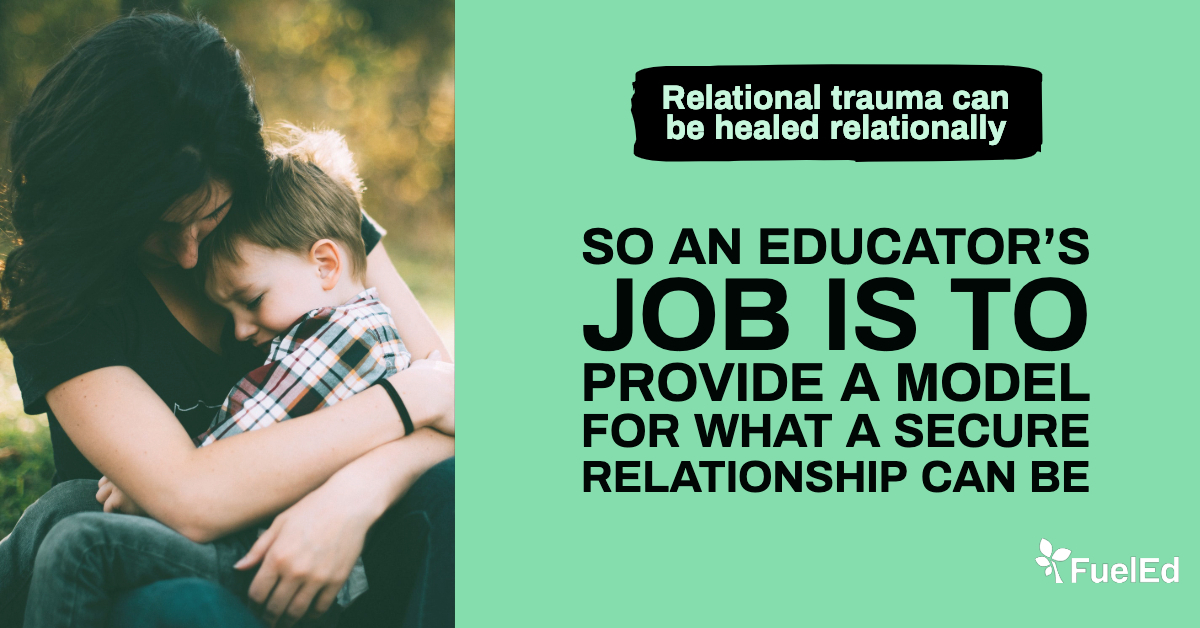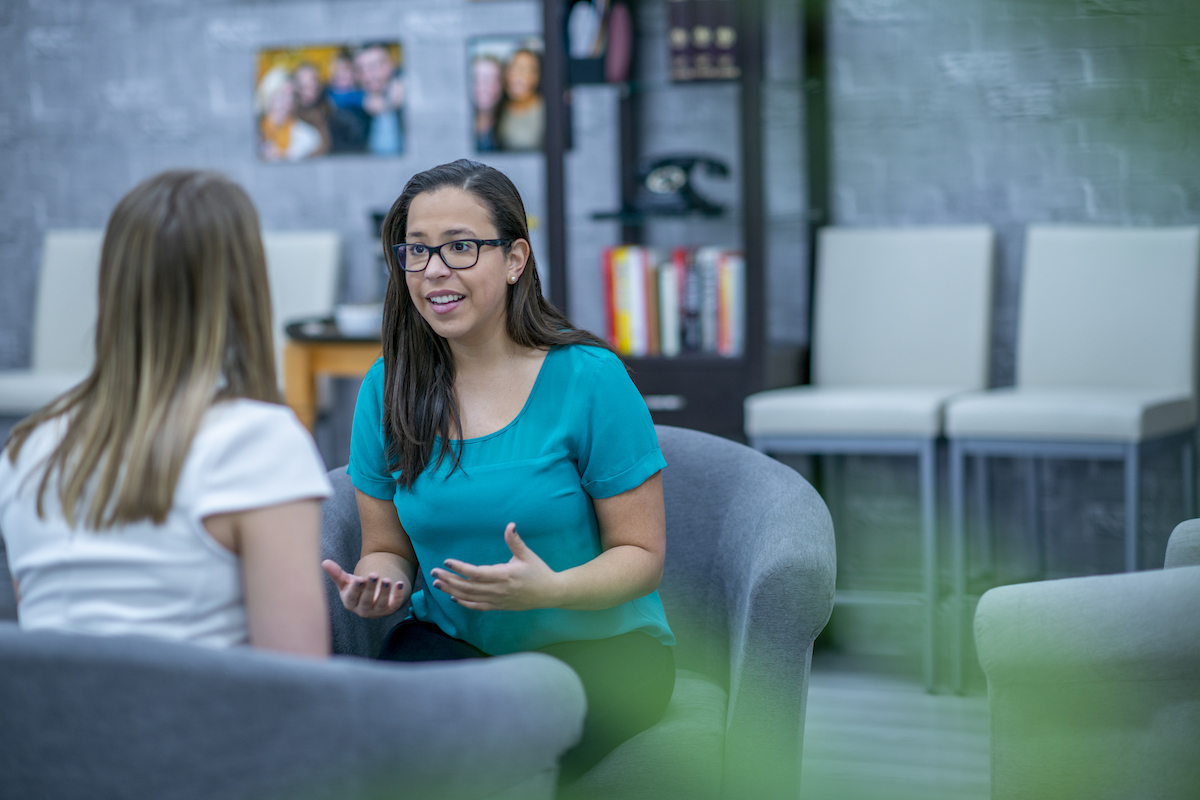Skills: Tools to Build Human Connection
In this second of four foundational posts, we explore the skills needed for educators to serve as “secure attachment figures,” and point to the potential for all educators to heal trauma, transform attachment styles, and catalyze academic, social, and emotional learning.

Fifty percent of students come to school with insecure attachments. But, for educators working with students from vulnerable populations, this number jumps to a staggering two thirds. Making progress with students in the face of such extreme developmental inequity can feel overwhelming, but the situation is far from hopeless.
Secure relationships can change the brain
Just as our brain is shaped by our early relationships, it continues to be shaped by our later relationships. Because human’s attachment and emotional neural circuitry remain malleable throughout life, any meaningful secure relationships—from birth until death—have the power to alter our development, change our brains, and heal trauma. It could be a relationship with a parent, spouse, friend, therapist, mentor. Very often, it's a teacher.
The brain is a "social organ of adaptation," meaning that it is constantly changing and adapting in the face of new experiences. This is why we, at FuelEd, advocate for a world where every educator is trained in the skills needed to build secure relationships.
What does it take?
Research tells us exactly what it takes to build a secure relationship (also known as being a “secure attachment figure”). Much of FuelEd's work strives to help educators helps move away from behaviors that build insecure relationships and towards new behaviors that build secure relationships:

Let’s explore the impact of an educator enacting just one of these secure relationship skills: communicating with empathy and compassionate understanding. Empathy is understanding the emotional state of another, but the real power of empathy is when we communicate this understanding.
Picture this: a student comes to you, crying about a fight. As a secure attachment figure, you might say, “I can see you’re really upset about this.” Responding to distress in this way, utilizing “mirroring” statements that reflect the others’ needs, feelings, thoughts, or problems can:
- Increase the students’ self-awareness of their own needs, feelings, thoughts, and problems. Because someone put words to the students’ experience, they now have the emotional vocabulary to name what they feel, need, and think.
- Help the student self-regulate and self-manage. Feeling understood, they can breathe easier. Problems feel lighter.
- Enable responsible decision making and problem-solving. Because empathy is calming, the student is now in a better state-of-mind to solve their own problems.
- Grow students’ social awareness. Because understanding themselves is the foundation for understanding others, this self-awareness can help with peer relationships.
The competencies emerging here look a lot like the competencies depicted in the multitude of frameworks for social-emotional learning in children.
However, what this example demonstrates—and what many student-focused frameworks are missing—is the role of the teacher.
There simply are no lesson plans, curriculums, or behavior management programs that will ever parallel the power of a teacher’s warmth, empathic understanding, acceptance, and honest communication.
Unlike academic and cognitive knowledge, social and emotional development occurs through the experience of secure relationships.
Like lock and key, an educator’s self-awareness, emotional intelligence, and interpersonal skills equip them to create moments of nurturance that open the door to a world of social emotional learning for students.

Emotionally intelligent educators and relationship-driven schools
What if educators were equipped with all the skills and support they needed to be secure attachment figures, providing a counterweight to the developmental inequity in their schools? Just imagine the impact.
With secure attachments at the center of our classrooms and schools, our education system has the power to stimulate neuroplastic processes that reshape brains, promote learning, repair emotional damage, and promote the development of whole, healthy people.
But there’s one more piece to this equation...
To learn more about the essential pathway to growing as a secure attachment figure, check out Part Three in our Foundational Articles Series.
SELF-ASSESS YOUR RELATIONSHIP SKILLS
FREE CHECKLISTAbout the author
Megan Marcus
Founder - San Diego CA
Megan holds a B.A. in Psychology from the University of California at Berkeley and Master’s degrees in Psychology from Pepperdine University. While at Pepperdine, Megan studied under Dr. Louis Cozolino and served as the lead researcher for his book, The Social Neuroscience of Education. Megan then completed a Master’s degree in Education, Policy, and Management from Harvard University, where she explored how to translate the elements of a therapists’ professional training to an educational setting. Her research with Dr. Cozolino and studies at Harvard combined to form the core beliefs that became the bedrock of FuelEd. Since 2012, Megan has passionately served the educational community as FuelEd’s Founder.
Megan holds a B.A. in Psychology from the University of California at Berkeley and Master’s degrees in Psychology from Pepperdine University. While at Pepperdine, Megan studied under Dr. Louis Cozolino and served as the lead researcher for his book, The Social Neuroscience of Education. Megan then completed a Master’s degree in Education, Policy, and Management from Harvard University, where she explored how to translate the elements of a therapists’ professional training to an educational setting. Her research with Dr. Cozolino and studies at Harvard combined to form the core beliefs that became the bedrock of FuelEd. Since 2012, Megan has passionately served the educational community as FuelEd’s Founder.




